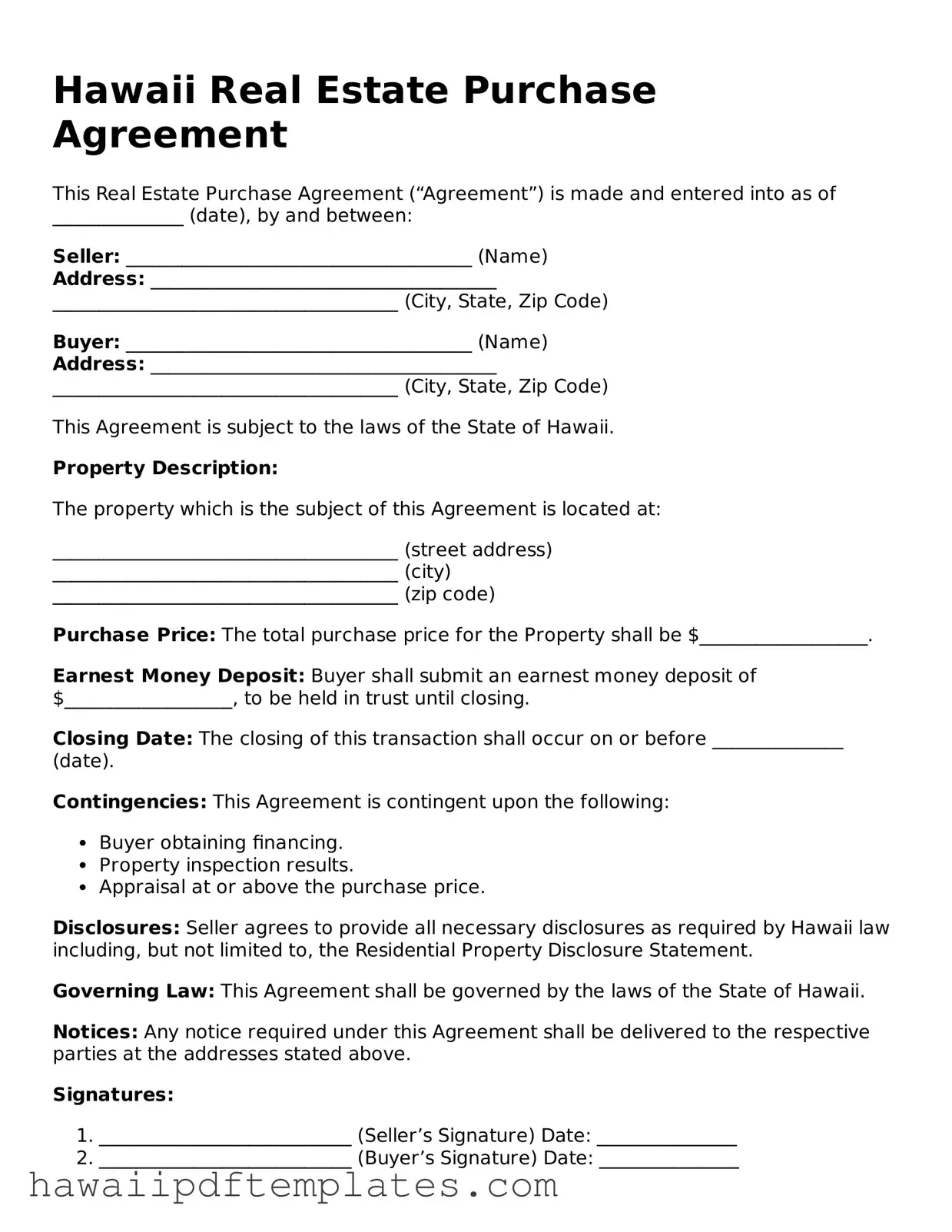Free Real Estate Purchase Agreement Document for Hawaii State
The Hawaii Real Estate Purchase Agreement form serves as a crucial document in the buying and selling process of real estate in Hawaii. This agreement outlines the terms and conditions under which a property is transferred from seller to buyer, ensuring clarity and legal protection for both parties involved. Understanding this form is essential for anyone looking to navigate the unique landscape of Hawaii's real estate market.
Ready to take the next step? Fill out the form by clicking the button below.
Customize Form Online
